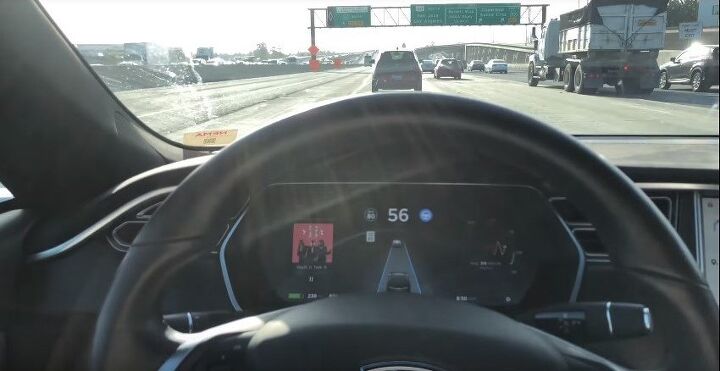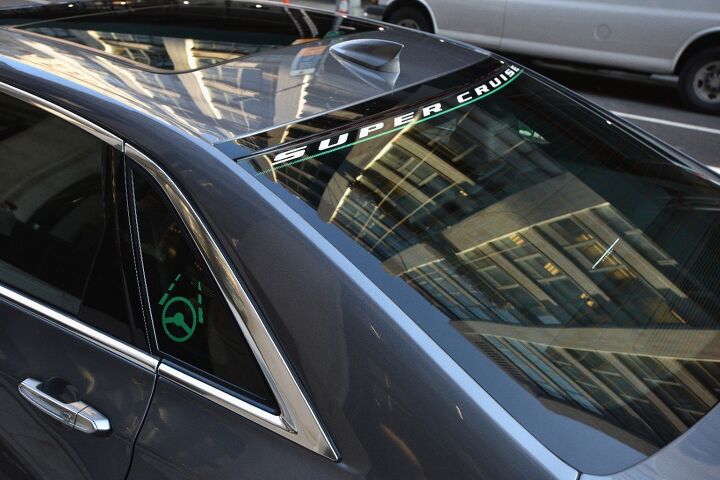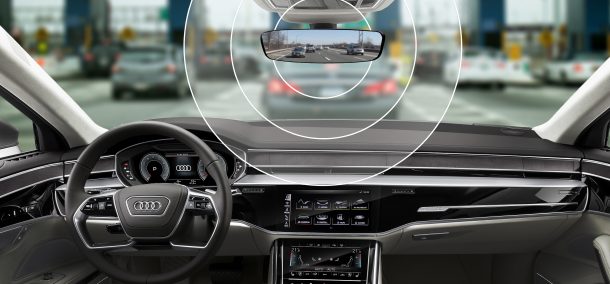#Technology
Old Man Lutz Gives Dealerships 20 Years to Live, Doubles Down on Driving Dystopia
Longtime auto executive Bob Lutz has always been an incredibly outspoken individual. His years of hard work have given him an insight into the industry that few possess, and he’s only become more willing to share that information as he ages. Like the industrious caterpillar, his ceaseless labor has allowed him to metamorphose into what is arguably his perfect form near the end of his lifecycle — a candid automotive butterfly.
We love hearing anything has to say, as his insight borders on the surreal, but with more than enough truth to come to pass. Last year, he divined a future where the car as we know it is destroyed by governmental regulation and advanced technologies. The dystopian plot seemed impossible upon a cursory glance, but the deeper you drive, the more plausible it begins to seem.
Lutz refocused this week at the SAE International WCX World Congress Experience in Detroit, saying the traditional dealer model will be among the first things to go in the brave new world of mobility. He called car dealerships an “endangered species,” suggesting to the crowd that it had “another 20 to 25 years before it’s all over.”
Hold the Line: Video From Location of Deadly Tesla Crash Shows Weird Autopilot Behavior
We all play amateur detective whenever a Tesla crashes or does something wonky while operating on Autopilot (or in its absence), and last week was no exception.
The death of Wei Huang following his Model X’s collision with a lane divider on California’s US-101 freeway in Mountain View prompted Tesla to issue two statements concerning the incident. In the second, the automaker admitted, after retrieving digital logs from the vehicle, that the vehicle was in Autopilot mode and that the driver did not touch the wheel in the six seconds leading up to the March 23rd impact.
Retracing the last few hundred yards of Huang’s journey on Google Streetview led this author to make a very obvious observation: that the paint marking the left-side boundary of the lane Huang was presumably driving in was faded and half missing as it approached the barrier. As it turns out, the condition of that not-so-solid white line caused another Tesla’s Autopilot to act strangely, but this time the driver corrected in time. He also has a video to show what happened.
Is Uber Putting It in Reverse on Autonomous Vehicles?
Is ride-hailing company Uber backing away from self-driving cars now that one of their test vehicles was involved in a fatality?
Following the death of a pedestrian hit by one of Uber’s experimental autonomous vehicles in Tempe, Arizona, the ride sharing company suspended the testing Uber was doing with AVs on public roads in Pennsylvania, Arizona, and California in the United States and Ontario in Canada. Now comes word that Uber has informed California’s Department of Motor Vehicles that it will not be renewing its license to test autonomous vehicles on that state’s public roads. That license expires at the end of this month.
Self-driving Company Waymo to Buy Thousands of High-end, Sporty Jaguar EVs for Taxi Service
Let’s hope future robo-taxi passengers appreciate a sport-tuned suspension and crisp driving dynamics, because there’s a slim chance they’ll notice it when shuttling around in a driverless Jaguar.
On Tuesday, Waymo, autonomous car unit of Google, announced its intent to purchase up to 20,000 Jaguar I-Pace electric crossovers for its future fleet of AV EVs. Fitted with an array of self-driving hardware and software, Waymo says the cars will hit the road in 2020. Testing begins this year, which has us wondering what kind of wait a regular I-Pace customer faces.
Rare Rides: 1991 Nissan Gloria Brougham - Formal, Turbocharged, Pillarless Motoring Awaits
Today in Rare Rides, we’re keeping it brougham. Last time, we examined a grey Mercury Grand Monarch Ghia (as 1970s America addressed brougham).
Now, we check out a grey Nissan Gloria Brougham VIP, as 1990s Japan addressed brougham.
Spot the Changes: 2019 Ford Fusion Gains Newish Face, Plug-in Version Now Takes the Long(er) Way Home
Squint harder. Yes, there are changes afoot in the 2019 Ford Fusion’s visage, though you’ll be forgiven if you can’t spot them from across the Lowe’s parking lot.
The automaker released images and information for the lightly refreshed model on Tuesday, ahead of its official debut at the upcoming New York Auto Show. Besides styling tweaks designed to keep things young and pert, all 2019 Fusion trim levels boast one of Ford’s new Co-Pilot 360 suite of driver assist features — even the lowly S model. For green car aficionados, the Blue Oval added an extra helping of electrons to the plug-in hybrid Energi model. Expect to burn ever so slightly fewer gallons of gas in a given year.
For now, Ford isn’t saying what others have: that this might be the last Fusion we ever see.
Subaru Exec Spins Frightening Vision of a Stickless Future
Is Subaru, a scrappy-but-approaching-the-mainstream automaker, about to ditch the manual transmission? That’s what some are gleaning from comments made by Subaru UK managing director Chris Graham on the sidelines of the Geneva Motor Show this week.
Speaking to Auto Express, Graham mused about the brand’s EyeSight driver-assist technology and Subaru’s desire to include the suite of safety aids on all of its cars. The trouble is, EyeSight isn’t available on Subarus equipped with manual transmissions. If you’re looking for goodies like automatic emergency braking and lane departure warnings, a Lineartronic CVT had best be on your wish list, too.
Graham’s comments point to a Subaru that’s prepared to weaken the bond between driver and car in the name of increased computerized control.
Safety Group to Senate: Clue in to the 'Baseless and Exaggerated Predictions' Swirling Around Autonomous Vehicles
Last year, the National Highway Traffic Safety Administration embraced autonomous technology by redefining how it categorized cars. Spurred by automakers and tech companies, the government has opened its eyes to this new technology and seen it as a way to potentially save lives by reducing the number of roadway accidents caused by human error.
Congress has been confronted with numerous pieces of legislation on the matter, too — prospective laws that would allow automakers to put hundreds of thousands of autonomous vehicles on the street, without the need to adhere to existing safety regulations. Many have called the move necessary if the United States hopes to be the first country to produce a truly self-driving car and start saving some lives.
It sounds almost too good to be true, and some claim it actually is. A group of public interest organizations is attempting to sound the bullshit alarm, claiming automakers are misleading government officials in the hopes of developing and profiting from unproven technology.
Cadillac President Attributes 'Measured Approach' to Super Cruise Success, Gently Slams Tesla
Speaking at a conference in California on Wednesday, Cadillac President Johan de Nysschen threw some gentle shade at his rivals by stating General Motors’ measured approach to hands-free driving was the secret to Super Cruise being a winner. For those of you that don’t know, Cadillac claimed it became the first automaker to accomplish a coast-to-coast drive using hands-free technology last fall.
While it’s debatable whether the Super Cruise equipped CT6s making the journey actually achieved the feat without a driver ever having to touch the steering wheel, GM’s semi-autonomous system is among the best in the business right now — if not the best.
How did it manage the feat? For the most part, Cadillac built on the technology it already had to fine-tune adaptive cruise control to a point where the car could effectively steer itself on predictable highway jaunts. But de Nysschen says it mastered that in a closed environment, waiting until the system was completely ready. Meanwhile, other areas of General Motors have been devoted to total autonomy and perfecting the Cruise Automation fleet’s artificial intelligence systems.
Ford Takes New Autonomous Fleets and Operating System to Miami
It has begun. Ford is finally ready to launch another batch of its faux-autonomous Domino’s pizza delivery vehicles to assess how people will interact with a self-driving vehicle. False autonomy has become a bit of a gimmick with Ford, but a necessary one. Last year, it disguised a man as a seat to assess how people would respond to a vehicle that only communicated using lights. Now it’s running with a similar strategy in a deal with the famous pizza chain, adding Postmates for good measure.
While the information gleaned from the endeavor is less important, the fact that Ford is already actively working with business partners on autonomous applications is what really matters. It’s laying the groundwork for future business opportunities.
However, if you’re worried that Ford’s pretend self-driving vehicles are a sign that it’s losing the race toward the self-driving car, don’t. In addition to the Domino’s car, the automaker is also launching blue-and-white research vehicles equipped with new self-driving hardware and software technology from Argo AI.
Audi Launching Vehicle-integrated Toll Technology in North America
Depending on where you live, toll roads might be a significant part of your driving life. There are a few ways to handle these moderate annoyances. You can carefully plot your course to avoid them, adding time to the journey and eventually trapping yourself in a situation where you’re scrambling to find enough change under your seat to appease I-95. However, a better solution would probably be to have some cash on hand, or maybe pick up one of those ugly boxes used for electronic toll collection.
E-ZPass, QuickPass, SunPas FasTrak, TxTag, and every other electronic collection measure require that you adhere a card or unsightly hunk of plastic to your vehicle’s windshield. While they don’t take up a lot of space, their placement can sometimes impede visibility and the cheap white plastic is bit of an eyesore — especially in a well-appointed interior.
Audi says it’s through with them and plans to launch an automated toll payment technology, integrated in the car’s rear-view mirror, for North American models. It might be one of the most mundane problems currently facing motorists, but somebody had to solve it.
Infiniti Wasn't Fibbing When It Estimated the Revolutionary QX50 Engine's Thirst
One thing is clear — with variable compression comes a newfound lack of thirst.
Infiniti’s previous midsize QX50 crossover didn’t astound in its thrift, garnering 20 miles per gallon on the EPA combined cycle. The move to a new, front-drive platform and addition of a years-in-the-making gasoline engine for 2019 has done wonders for the model’s drinking habit, however, and Infiniti engineers pegged the MPG figures right on the nose.
With the 2019 QX50‘s fuel economy now confirmed by the EPA, it begs the question: just how much of the model’s thriftiness can the variable compression engine take credit for?
Talk to Me, Like Drivers Do: Ford Comes Up With a New Way to Open a Door
The relationship between humans and cars is poised to become quite different in the years to come, or so the automakers warn promise us. Autonomous vehicles will whisk us to whatever destination we desire, simply by inputting our desired address into a navigation system or, perhaps, just by speaking it aloud. Already, the level of communication between humans and the modern car astounds.
We’ve come a long way from Chrysler’s Electronic Voice Alert, that nagging companion of the 1980s.
Now, Ford Motor Company looks ready to take our current relationship to the next level, while putting the human in charge. A U.S. patent published today describes a car that opens its doors only when it hears its master’s voice. And by “open,” we mean wide open, not just unlocked.
Former Banker Wants Wealthy Individuals to Share Racing Cars Via New App
The former digital chief of Credit Suisse, Marco Abele, intends to introduce an app allowing wealthy individuals to share ownership of experiential assets — things like vineyards, works of art, and even fine automobiles.
Abele calls the digital service a “blockchain-based investment platform,” which is just a bullshit businessman buzzword way to say there will be a transaction ledger. By keeping things transparent, the group’s owners can ensure nobody gets financially burned when someone drives a shared $300,000 Lamborghini Huracan Super Trofeo Evo into a barricade.
At any rate, it sounds like communism for rich people.
Hide and Seek: GM Seeks Patent for Vehicle-to-Pedestrian Communication
Here at TTAC, we sometimes offer up a story published by a sister publication after deciding it’s something worthy of your time. This piece, published by GMInsideNews, fits that bill. While the soulless autonomous future scares many of us, General Motors is working on a way to stop those driverless cars from plowing over each and every one of us. Read on.
General Motors continues to pour money and time into perfecting vehicle autonomy.
One of the integral themes of an autonomous driving future is communication. Vehicles will be required to rapidly and constantly talk to one another, relaying position, speed, and intent, with the same demands applying to our roadways and intersections — which will be expected to relay weather, traffic, and safety information in real time as vehicles approach.
Pedestrians, however, pose a unique problem. In busy cities, pedestrians and drivers routinely communicate nonverbally by making eye contact or gesticulating, but an autonomous vehicle doesn’t have that privilege. Its machine code is dependant on a series of binary questions it must ask itself in order to determine if the person is a threat, which — if affirmative — currently results in the car coming to a halt, which on occasion has caused a rear-end collision, or two.
Well, GM is working on a system in which autonomous vehicles will be capable of better understanding the motions of pedestrians by communicating with their Internet-connected devices, be it smart-phones, wearables, or perhaps even future advancements made towards transhumanism.






























Recent Comments